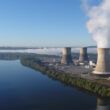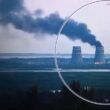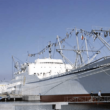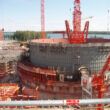Calculating the value of an international fuel bank
By Ta Minh Tuan, August 28, 2012
In recent years the idea of establishing an international nuclear fuel bank has gained a lot of attention, with the United States and other Western nations promoting the concept and trying hard to make it reality. A rough example of how a fuel bank might work is provided by the 2009 agreement between the United States and the United Arab Emirates (UAE); under that agreement, Abu Dhabi agreed not to exercise its right to enrich and reprocess nuclear material, while the United States agreed to furnish low-enriched uranium to the UAE and also to provide nuclear cooperation in various forms. But in the developing world's political circles, an international fuel bank is not a particularly popular idea.
Western academics and government officials who advocate for a fuel bank often cite the need to close loopholes in the international nonproliferation regime. They argue that a country's ability under the Nuclear Non-Proliferation Treaty to enrich uranium and reprocess spent fuel creates a risk of weapons proliferation, and that reducing this risk must be treated as a high priority. (Some experts, it should be noted, maintain that a fuel bank would not succeed in its primary goal of limiting proliferation, and in fact would do the opposite.)
But what are the advantages of a fuel bank that would motivate potential customers to participate in it? Proponents point out several. First, they say, customers would not have to build their own enrichment plants, and this would save large amounts of money that could be devoted to other purposes. In 2008, the cost of constructing a new enrichment facility was estimated at between $250 million and $3.3 billion, depending on factors such as capacity and location. This is by no means a trivial amount, especially for developing nations facing fiscal constraints and relying on foreign lending or other forms of assistance to finance the development of their nuclear sectors. Especially for newcomers to the nuclear industry, a fuel bank could improve the economic viability of nuclear power.
A second argument made in favor of a fuel bank involves nuclear security: An international fuel bank would reduce a customer nation's concerns about providing physical protection for its nuclear materials. Developing countries tend to face greater difficulties than developed ones in ensuring that their nuclear facilities are secure. A fuel bank would allow a country to focus resources on the security of its nuclear power plants instead of devoting a portion of its resources to enrichment facilities.
A third point in favor of a fuel bank is that, in many countries, public support for building nuclear power plants has diminished significantly since the accident at the Fukushima Daiichi Nuclear Power Station. Fukushima renewed the public debate over nuclear energy and has forced some governments to reconsider their plans to introduce nuclear power as an alternative to fossil fuels. Those governments that wish to continue their nuclear programs must take into account public anxiety — and a fuel bank could help in that regard by assuaging, at least to some degree, concerns about the safety of nuclear facilities.
But customer nations must consider the potential problems of a fuel bank, as well. One such problem is that nations that renounce the right to enrich their own fuel would be left in a difficult position if market prices for low-enriched uranium increased sharply. In 1997, the market price for a kilogram of low-enriched uranium for use in research reactors was about $5,400. By 2005, that price had risen to about $8,800 — an increase of over 60 percent in eight years. For a nation with no capacity to enrich fuel on its own, cost increases on that scale would imply higher prices for the electricity that nuclear power plants produce, which in turn would reduce the competitiveness of nuclear power in comparison with other sources of energy. Furthermore, it is not clear how much room would exist for customers to negotiate prices with supplier states if an international fuel bank came into being. All in all, depending entirely on foreign fuel to power a nuclear reactor — and cutting off the possibility of doing otherwise — seems economically risky.
Another set of potential problems concerns nuclear fuel as a national security issue. Any country that maintains a nuclear power sector but forswears its right to uranium enrichment becomes potentially exposed to international pressure; it has less space in which to conduct foreign policy. That is, if supplier and customer nations experience diplomatic tensions or even become antagonists, a threat to cut off the supply of nuclear fuel would pose an acute risk to the customer state's national security. Concerns such as these may sound far-fetched to some, but policy makers and policy planners must foresee worst-case scenarios.
Even if a nuclear fuel bank were to become a reality, it would not become operational right away. In the meantime, a prospective customer must ask itself some basic questions: Is an international fuel bank really necessary? Does the country need one? Does it want one? Would a fuel bank merely impose the will of a supplier on a customer?
In any event, countries must keep in mind that an international nuclear fuel bank could not be expected to eliminate all proliferation concerns related to the nuclear fuel cycle. A fuel bank is intended to help reduce proliferation threats — but it is only one of many measures employed in that effort.
Topics: Nuclear Energy
Share: [addthis tool="addthis_inline_share_toolbox"]














